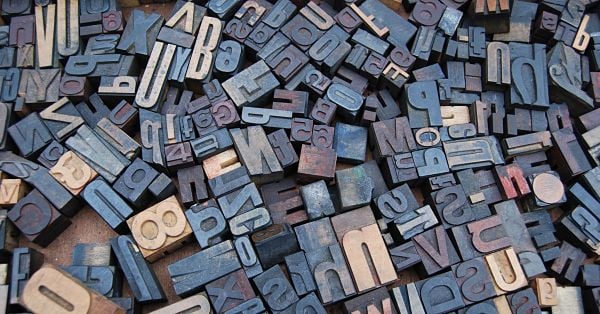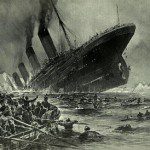 Some Tech is a Limited Good
Some Tech is a Limited Good
Reruns were once a thing. In an age when there were four networks, one given to showing Life of a Cumquat, new shows appeared when ABC, NBC, and CBS said they would appear: usually Fall. After the first few months, they simply replayed the shows until the Fall or you could poke around for old shows they were rerunning: reruns.
Star Trek was just before my (viewing) time and so I found it in reruns. It came on right after Lawrence Welk (do not Google) and was deeply cut for more commercials. There was no streaming. You could not buy those 79 precious episodes. I actually recorded a few on a tape recorder (think digital recording on a tape that would snarl inside the machine playing it destroying both . . . Often.) and would read a photo novel as the tape played.
It was the best I could do and it was goodish.
The moment Paramount would sell me VHS tapes (uncut!) of the 79 episodes, photo novels and the audio tapes vanished. Old tech was destroyed by better new tech.
A generalization began to form as VHS gave way to Laser Disc (no degredation of the image!) to CD-i to DVD to Blu-Ray to streaming: newer tech is almost always better than older tec. (Laser discs were a sad exception.) This a decent generalization, but it is not always true.
I have come to the conclusion that e-texts/books (I love my Kindle!) have a use, but that books on paper are better for most uses.
E-Books are Great, but Not As Great As I Thought They Would Be
When e-books were developed, I thought they were just new tech replacing older tech. This was particularly true when Amazon and others made the technology easy to use. I was partially wrong. E-books are not replacing (or should not replace) all uses of paper.
Do not misunderstand: e-books are good. They are a supplement to paper books and in some uses will replace them altogether.
E-books do some things that paper text books cannot do. When I blog a book, I use an e-copy to easily get quotations into the blog post. That’s a good thing. Taking notes or highlighting an ebook is better than a paper book, because I can mark up my text and turn off the markings!
If there is a book I need to read once, either for fun or because it is ephemeral (like a book on current politics), then an e-book takes up no space on my book shelves, can be read, and then accessed when needed. I throw away many such books when I have them on paper, space in my office matters, but I can keep the e-book. Every so often, rarely but sometimes, that copy of an obscure Trollope novel will come in handy!
A textbook can stay up to date on an e-text or embed other forms of media into the presentation. That works. When I travel, I used to take a suitcase of books to teach or speak and now I take a Kindle. That’s good news for my aging back and the new Spirit airlines chintzy carry on rules.
But.
Having experimented for over a decade with personal use and gifted students in classes using e-texts, I do not think they work well for serious study. The geography of the book (take Hackett’s Complete Plato) helps me find where I am going and this is true of my freshman college students. We are three dimensional and so is the book.
That’s not the only power of paper.
The Power of Paper
Isaac Asimov had it right when he pointed out how high-tech paper books are. They contain data, the data spurs massive creation of more data in the human mind, and once printed require little energy (“light”) to use. They can be made to last for centuries with little or no data degradation.
I have already pointed out that the paper book has a geography, a height, weight, that helps me remember where things are (the left side of the page is where I find the Demurge in my working copy of Timaeus). More powerfully, the ability to flip through a book has not been replicated on an e-book. If you know a book, you can move around a paper book more quickly than an e-book. An e-book is useful for searching for a quotation or word you cannot find, but when you must sit in class quickly discussing a text, everyone knows to bring the paper.
Books are also beautiful. Karen Swallow Prior’s Reading Well is made with good paper, beautifully illustrated, and has excellent type. I read the hardcover and then used an e-book to blog. There is an aesthetic pleasure to a well made book.
A good leather copy of anything on excellent paper (take a study Bible) is a sensuous experience and makes for better study. Rare it is when what is most pleasurable is also most practical, but for serious study, the fine book wins. The e-text is supplemental used in travel situations or when sharing quotations quickly.
The paper book is embodied more strongly than the e-book. I think the paper book has the matter-mind balance more like that found in us, the human, while the e-book is too little matter and too much mind. Angels would find e-books too earthy, but men need more.
A suggested generalization: as a mind-body composite, removing physical interaction from an activity will come at a cost.
Appendix: A Crazy Idea
Reading has a tactile component e-books ignore. Perhaps true liquid paper could be developed to make physical books where the pages could be changed. An e-book would have actual pages that could be turned. If one had a five hundred page book, then 500 pages of liquid paper would be placed in the cover. The book would be downloaded and read. If the next book had fifty pages, then 450 pages of liquid paper would be removed and a new download done or perhaps the “cover” would contain all the books owned and ask the owner to place the proper number of physical e-paper pages in the cover.
This might give humans many of the advantages of the “geography” of a paper book with all the power of an e-book (notes, sharing, ability to carry a large collection).












